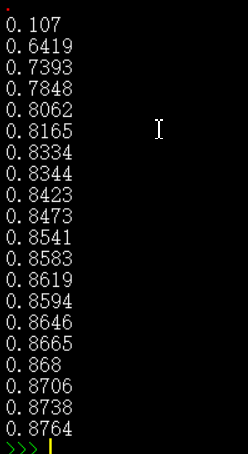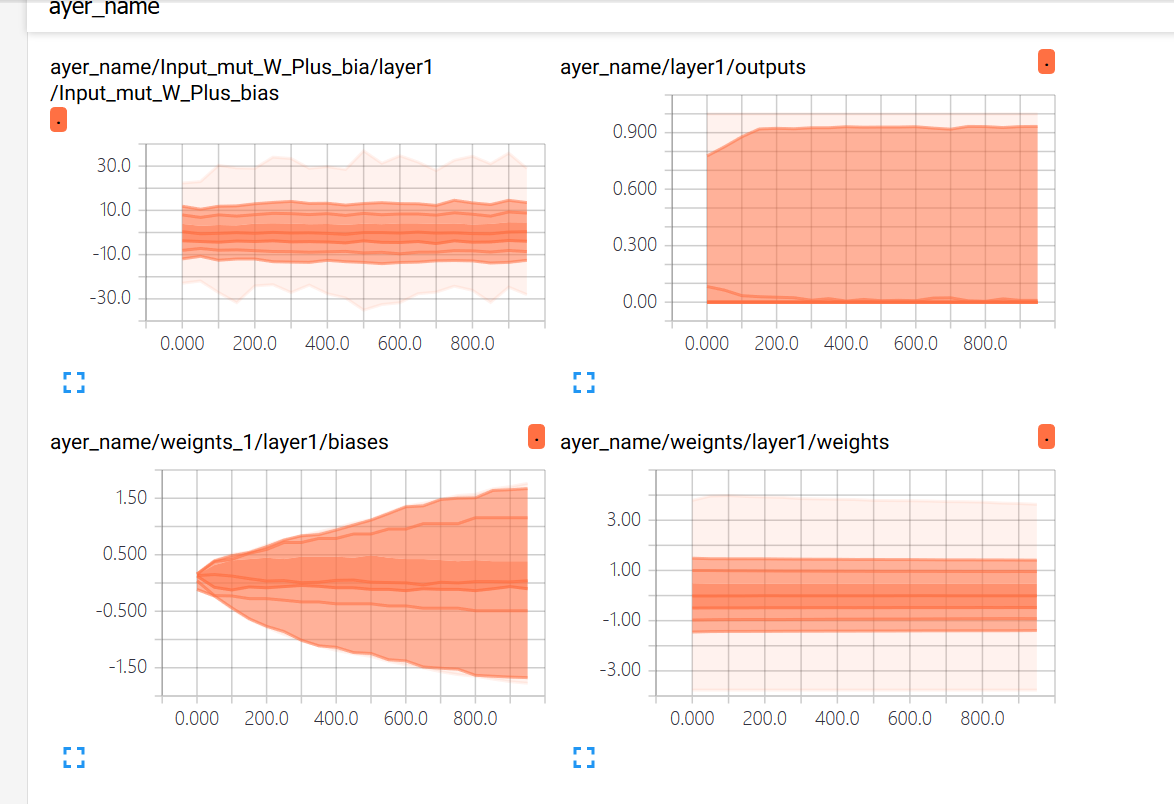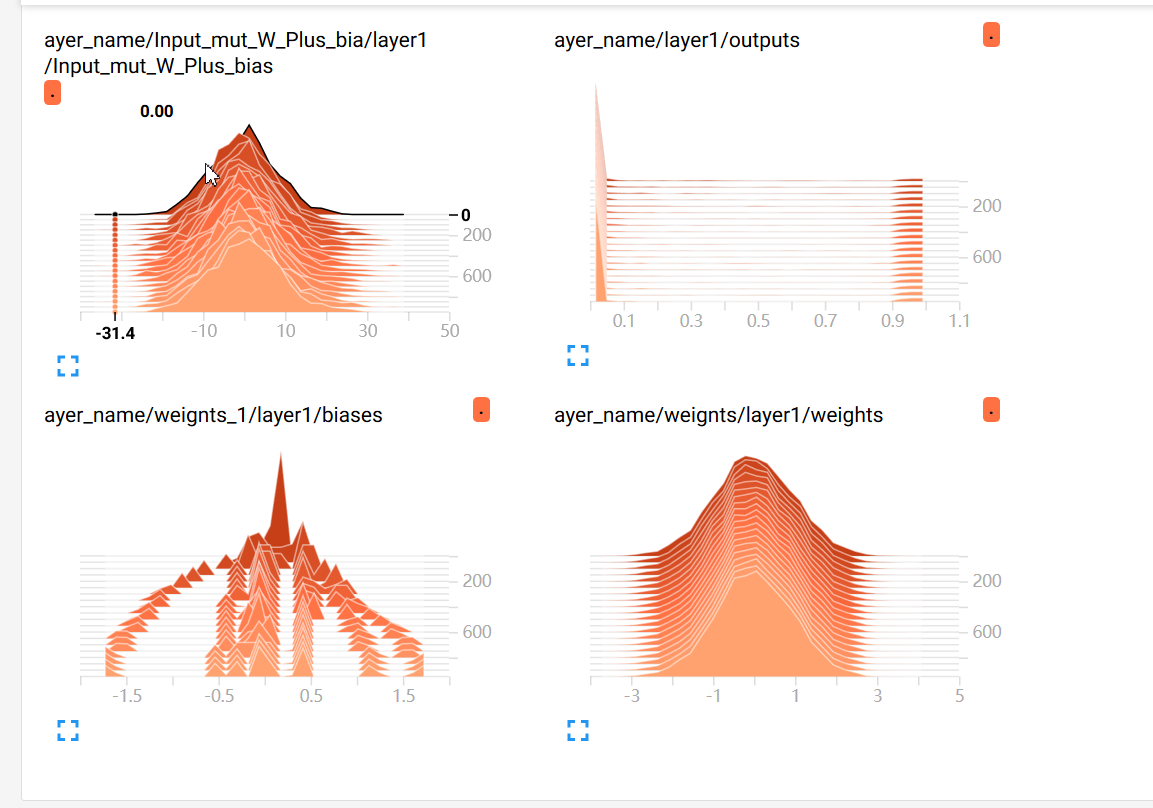python機器學習算法系列之初識神經網路分類
阿新 • • 發佈:2019-01-25
下面的例子是區分數字如下圖:
在程式中通過下面語句就可以自動下載資料集
mnist=input_data.read_data_sets('MNIST_data',one_hot=True) mnist=input_data.read_data_sets('.',one_hot=True)MNIST 資料下載寫得非常清楚,大家自行觀看。
程式如下:
#tensorflow分類 import tensorflow as tf from tensorflow.examples.tutorials.mnist import input_data #產生資料 mnist=input_data.read_data_sets('.',one_hot=True) #載入資料 #定義神經層 def add_layer(inputs,in_size,out_size,n_layer,activation_function=None): layer_name='layer%s'%n_layer with tf.name_scope('ayer_name'): #視覺化 with tf.name_scope('weignts'): Weignts=tf.Variable(tf.random_normal([in_size,out_size]),name='W') #權重 tf.summary.histogram(layer_name+'/weights',Weignts) #為了通過瀏覽器觀察每一神經層的權重 with tf.name_scope('weignts'): #視覺化 biases=tf.Variable(tf.zeros([1,out_size])+0.1,name='b') #偏移量 tf.summary.histogram(layer_name+'/biases',biases) with tf.name_scope('Input_mut_W_Plus_bia'): #視覺化 Input_mut_W_Plus_bia=tf.matmul(inputs,Weignts)+biases tf.summary.histogram(layer_name+'/Input_mut_W_Plus_bias',Input_mut_W_Plus_bia) #為了通過瀏覽器觀察每一神經層的權重 if activation_function is None: outputs=Input_mut_W_Plus_bia else: outputs=activation_function(Input_mut_W_Plus_bia) #激勵函式 tf.summary.histogram(layer_name+'/outputs',outputs) #為了通過瀏覽器觀察每一神經層的輸出值 return outputs #定義準確率:tensorflow定義完了都是要有sess.run來執行的 def compute_accuracy(v_xs,v_ys): global prediction #prediction全域性化 y_pre=sess.run(prediction,feed_dict={xs:v_xs}) #預測值 correct_prediction=tf.equal(tf.argmax(y_pre,1),tf.argmax(v_ys,1)) accuracy=tf.reduce_mean(tf.cast( correct_prediction,tf.float32)) result=sess.run(accuracy,feed_dict={xs:v_xs,ys:v_ys}) #執行上面定義的accuracy return result #定義給輸入定義placeholder #None就是代表不管多少例子都可以,784可以理解為樣本中只有一個特徵 with tf.name_scope('inputs'): #視覺化 xs=tf.placeholder(tf.float32,[None,784],name='x_input') #28*28 ys=tf.placeholder(tf.float32,[None,10],name='y_input') #新增神經層tf.nn.softmax一般用來分類 prediction=add_layer(xs,784,10,1,activation_function=tf.nn.softmax) with tf.name_scope('cross_entropy'): #視覺化 cross_entropy=tf.reduce_mean(-tf.reduce_sum(ys*tf.log(prediction),reduction_indices=[1])) #代價函式,分類用softma和coss_entropy配 tf.summary.scalar('cross_entropy',cross_entropy) #為了通過瀏覽器觀察每一神經層的誤差(代價函式) with tf.name_scope('train_ste'): train_step=tf.train.GradientDescentOptimizer(0.5).minimize(cross_entropy) #優化函式 init=tf.global_variables_initializer() #初始化所有變數 sess=tf.Session() merged=tf.summary.merge_all() #將所有需要在瀏覽器中展現的引數合併在一起 writer=tf.summary.FileWriter("logs/",sess.graph) #將需要視覺化的東西寫到logs檔案下 sess.run(init) #訓練多次 for i in range(1000): batch_xs,batch_ys=mnist.train.next_batch(100) sess.run(train_step,feed_dict={xs:batch_xs,ys:batch_ys}) if i%50==0: result=sess.run(merged,feed_dict={xs:batch_xs,ys:batch_ys}) #將需要統計的結果加到writer writer.add_summary(result,i) print(compute_accuracy(mnist.test.images,mnist.test.labels)) #列印準確度
執行結果:
可以看到學習過程中準確率逐漸上升。從最初的0.107上升到0.8764
神經網路圖:從中可以看到資料流向
誤差函式:
神經層內部引數變化:






